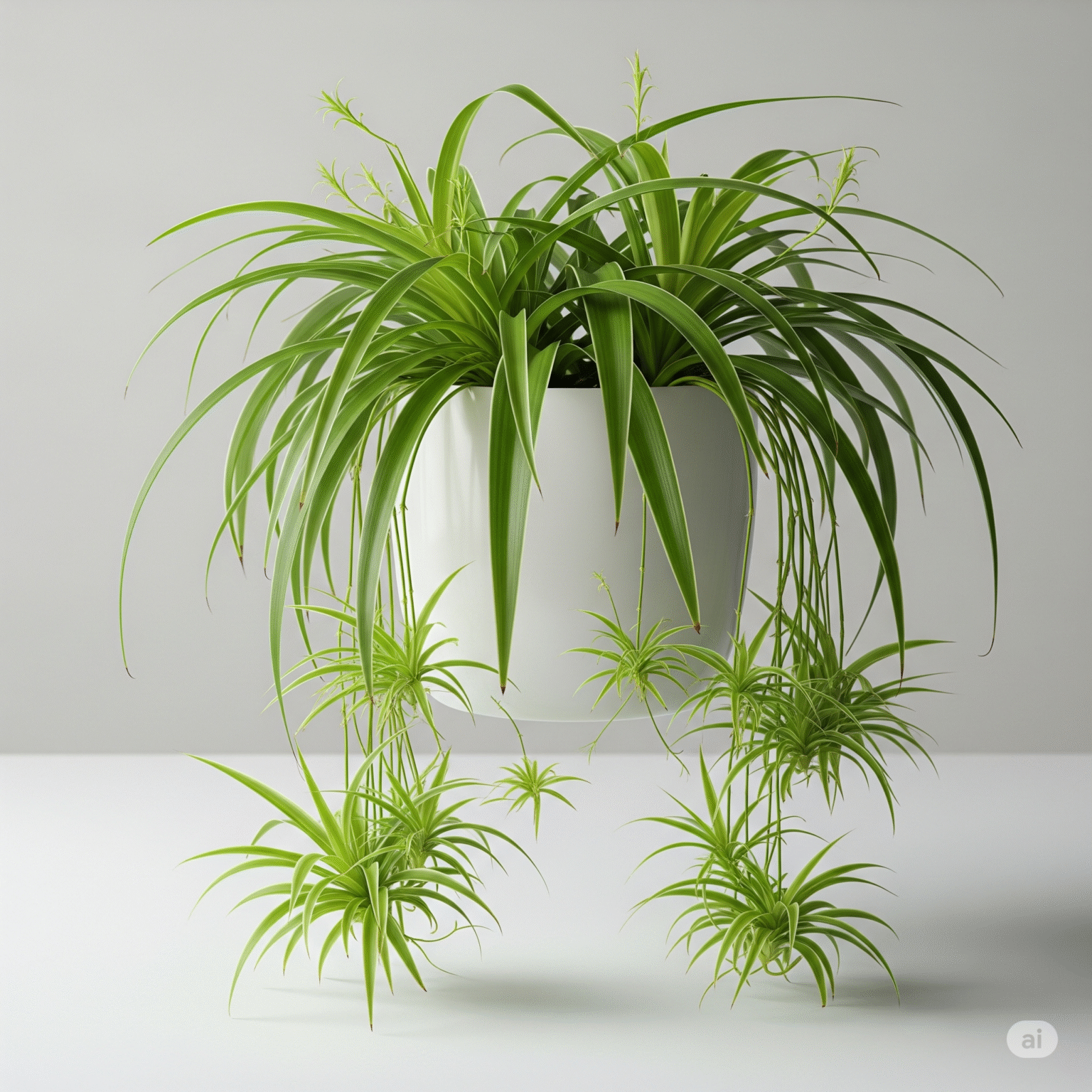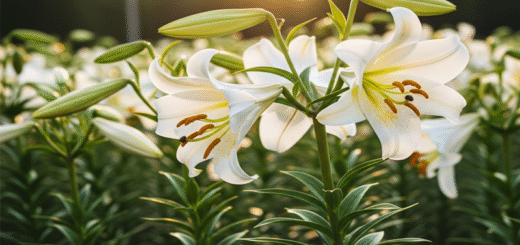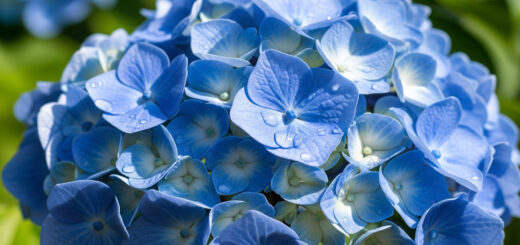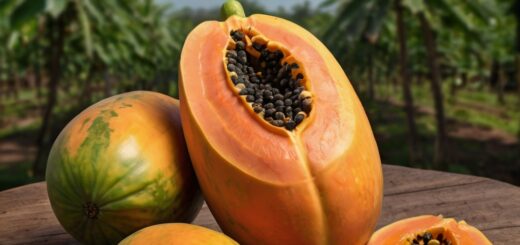Spider plant, Chlorophytum comosum: Description, Distribution, Family, and Facts

It is also known as spider ivy, airplane plant, ribbon plant, hen and chickens, and spider ivy due to its spider-like appearance. Chlorophytum comosum is an evergreen perennial plant in the Asparagaceae family. It’s native to tropical and southern Africa, but it’s naturalized in other places, including Western Australia and Bangladesh. Due to its hardiness, the Chlorophytum comosum makes a great houseplant. Tap water can cause “burned tips” due to its sensitivity to fluoride. The most popular form is variegated.
Description of the Spider plant, Chlorophytum comosum:
The Chlorophytum comosum grows to about 60 cm (24 inches) tall, although it can descend many feet as a hanging plant. It has fleshy, tuberous roots that measure from 5 to 10 cm (2 to 4 inches). There are long narrow leaves that measure 20-45 cm (8-18 in) long and 6–25 millimetres (0.2–1.0 in) wide.
Long, branched inflorescences produce flowers that can reach 75 cm (30 in) in length and bend downwards to meet the ground. An inflorescence begins as a cluster of 1-6 flowers along its stem (scape). An inflorescence consists of several clusters arranged at the base of a bract that ranges in size from 2 to 8 cm. As most of the flowers die off as soon as they are produced, the inflorescences are sparsely flowered.
Greenish-white flowers are borne on stalks measuring 4 to 8 mm (0.2 to 0.3 in) in length, with a stalk diameter of 0.2 to 0.3 in. A flower has six triply veined petals measuring 6–9 mm (0.2–0.4 in) in length and slightly hooded or boat-shaped at the tips. Approximately 3.5 mm (0.1 in) long pollen-producing anthers are attached to filaments of similar length. Three to eight mm (0.1 to 0.3 inches) is the length of the central style. A capsule contains 3-8 mm (0.1-0.3 in) long seeds on stalks (pedicles) that reach 12 mm (0.5 in).
On the tips of their branches, inflorescences carry both flowers and vegetative plantlets. Eventually, these plantlets droop and touch the soil, forming adventitious roots. Many sources refer to the stems (scapes) of the inflorescence as “stolons,” but this term is more appropriately used for stems that do not bear flowers and have roots.
Taxonomy of the Spider plant, Chlorophytum comosum:
a Swedish naturalist who studied South African plants, who first described Chlorophytum comosum as Anthericum comosum in Prodromus Plantarum Capensium in 1794. The species was later moved to a number of different genera, including Phalangium, Caesia, Hartwegia Nees, and Hollia, before Jacques placed it in Chlorophytum in 1862.
There have been some authors who have confused this species with Chlorophytum capense (L.) Voss, but this is a different species.
Cultivation of the Spider plant, Chlorophytum comosum:
The Chlorophytum comosum is one of the most popular houseplants. All-green cultivars make up only a small proportion of plants sold. There are two variegated cultivars that are most common:
A broad white stripe runs down the middle of the green leaves of C. comosum ‘Vittatum’. It is usually sold in hanging baskets so that the plantlets can be displayed. There are white stems on the long stems. The same type of striping and compact size are available in a “curly” version as well.
There is a variation of C. comosum ‘Variegatum’ that has leaves that are darker green with white margins. There is generally a smaller size difference between it and the previous cultivar. Green stems are present on the long stems.
Propagation of the Spider plant, Chlorophytum comosum:
The budding flowers of a spider plant can be seen in this picture.Embryos and budding flowers.An image of a seed taken under a microscope. An image of a plant seed taken under a microscope. Typically, Chlorophytum comosum is propagated by potting the plantlets, also called spiderettes or pups, directly into potting soil or pumice, attached to the main plant or by cutting the running stems and then potting them. The spider plant is a versatile plant, capable of thriving under a variety of conditions. Despite being able to tolerate temperatures down to 2 °C (35 °F), they grow best between 18 °C (65 °F) and 32 °C (90 °F). The presence of high levels of fluoride or boron can harm plants.
Toxicity and effects on pets of the Spider plant, Chlorophytum comosum:
There is no toxic effect on humans or pets if spider plants are consumed.
Air purification of the Spider plant, Chlorophytum comosum:
According to the NASA Clean Air Study, air plants are effective at removing formaldehyde and xylene from household air; however, these results do not apply to most buildings, where outdoor-to-indoor air exchange already removes volatile organic compounds (VOCs) at a rate that could only be matched by placing 10–1000 plants per square meter.
According to a 2014 review, the results failed to replicate in future studies:
The ability of plants to absorb VOCs has been well documented in laboratory studies, but further research is needed to clarify the full capacity of plants in real-world settings.
The Clean Air Study found that spider plants reduced formaldehyde pollution in laboratory settings, and approximately 70 plants would neutralize formaldehyde emissions from a representative (c. 167 m2 [1,800 sq ft]) energy-efficient house, assuming each plant occupying a pot of 3.8 L (0.84 imp gal; 1.0 US gal).



